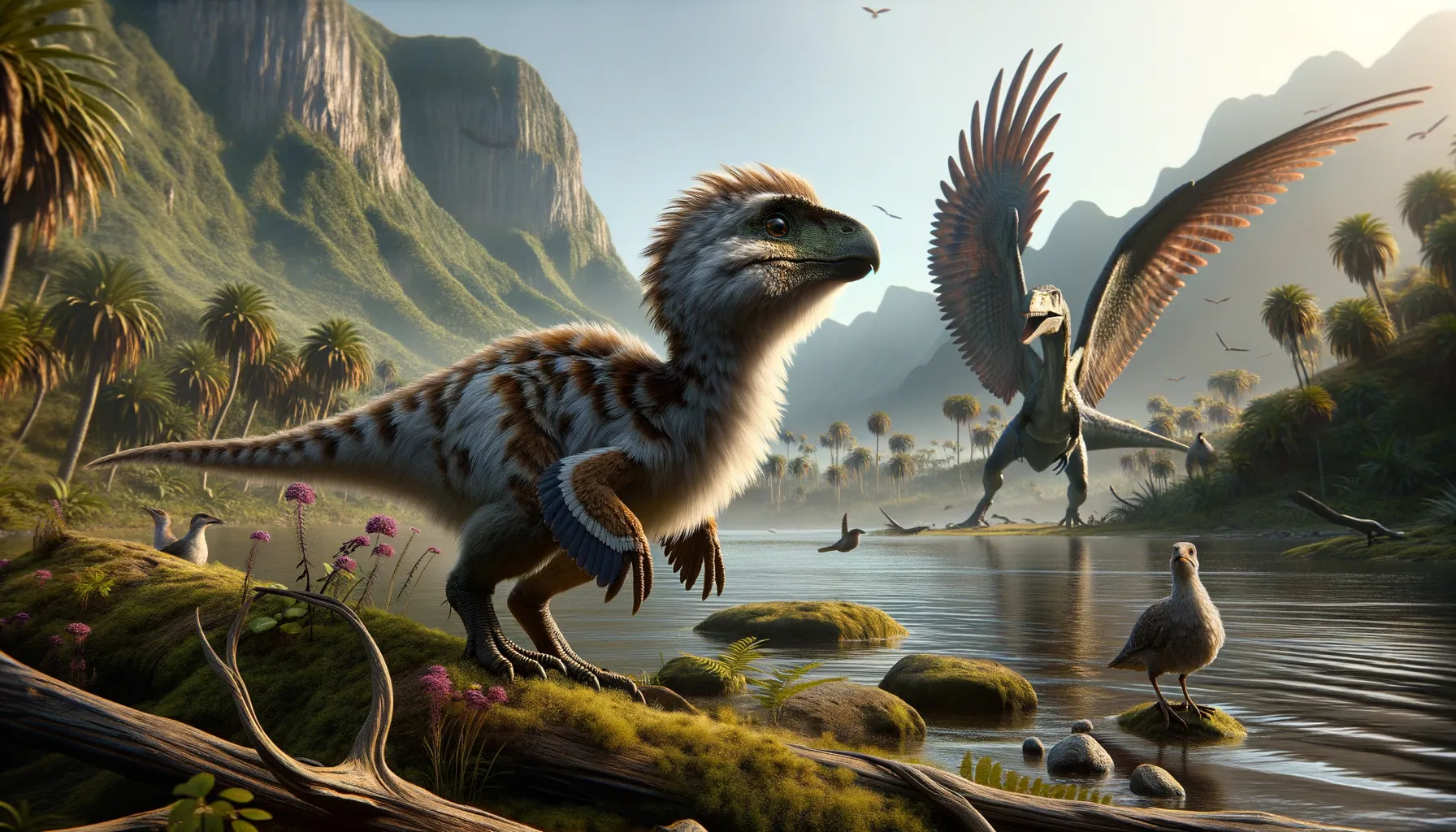
Ostromia
Feathered marvel of flight evolution.
Period
Jurassic
Length
Roughly 70 centimeters long.
Height
About 15 centimeters tall.
Weight
Approximately 100 grams.
Ostromia, a small bird-like dinosaur, lived during the Late Jurassic period. Initially thought to be related to Archaeopteryx, Ostromia is known for its well-preserved fossil evidence. This small theropod highlights the evolutionary transition from non-avian dinosaurs to birds. With a lightweight body and feathered wings, it's a remarkable example of early flight adaptations. The fossils predominantly found in Europe provide crucial insights into avian evolution, showcasing features similar to those of modern birds.
Diet
Ostromia likely had a varied diet, consisting of small insects, reptiles, and possibly other small creatures. Its lightweight build and size suggest it was an opportunistic feeder, utilizing its agility to catch prey.
Hunting
Being a small and fast predator, Ostromia may have pounced on unsuspecting insects or small reptiles. It relied on stealth and quick movements rather than power to hunt effectively.
Environmental challenges
Ostromia faced challenges such as finding food in competitive ecosystems and avoiding larger predators. Its feathered wings suggested an adaptation to potential aerial predators. The fluctuating Jurassic climates would have posed survival challenges, demanding versatile feeding and movement strategies.
Speed
Likely agile due to its small size.
Lifespan
Exact lifespan unknown; estimates vary.
First discovery
Found in Germany, first named as a different species.
Fun Facts
- Ostromia is named after John Ostrom, an American paleontologist who helped link dinosaurs with birds.
- This small dinosaur, about the size of a modern crow, lived around 150 million years ago.
- Ostromia fossils were found in Germany, in the famous Solnhofen limestone deposits.
- It had feathers, supporting the idea that many dinosaurs were more bird-like than previously thought.
- Ostromia was likely a skilled flyer or glider with wings resembling those of early birds.
- Its discovery adds to the understanding of the evolutionary transition from dinosaurs to birds.
- Ostromia is part of the theropod group, which includes the ancestors of all modern birds.
Growth and Development
Like many theropods, young Ostromias likely went through rapid growth phases. Their feather development would be crucial, transitioning from fluff in juveniles to more defined flight feathers in adulthood. The growth might have been uneven, with periods of rapid change and slower stages depending on available resources.
Habitat
Ostromia inhabited environments that provided shelter such as forests, offering abundant insects and small reptiles. It needed areas that facilitated flight or gliding, indicating a mixed terrain with trees and open spaces. The European habitats of the Late Jurassic showcased a diverse array of flora, providing both food and camouflage.
Interaction with other species
Ostromia likely interacted with other small dinosaur species through competition for similar resources. Its presence among varied species indicates complex ecosystems where territorial behaviors may have existed. Fossil evidence implies cohabitation with other early birds and reptiles.
Natural lifespan
Ostromia's lifespan might have been short due to its small size and predation pressures.
Reproduction
Ostromia likely laid eggs in ground nests, similar to other bird-like dinosaurs. Parental care might have been present, protecting eggs and young ones from predators. Reproduction would have been timed with seasonal resource availability to ensure young Ostromias had ample food.
Social behaviour
Ostromia could exhibit some degree of social interaction, often seen in bird-like predators. Flocking behavior might have helped in foraging and protection from predators. Communication through vocal calls or feather displays was plausible for territory and mating rituals.
Fossil locations
Ostromia fossils have predominantly been discovered in the limestone deposits of Germany. These sites are rich in Late Jurassic fossils, preserving detailed impressions of Ostromia. The German quarries continue to be crucial for understanding Jurassic avian and dinosaur evolution.
